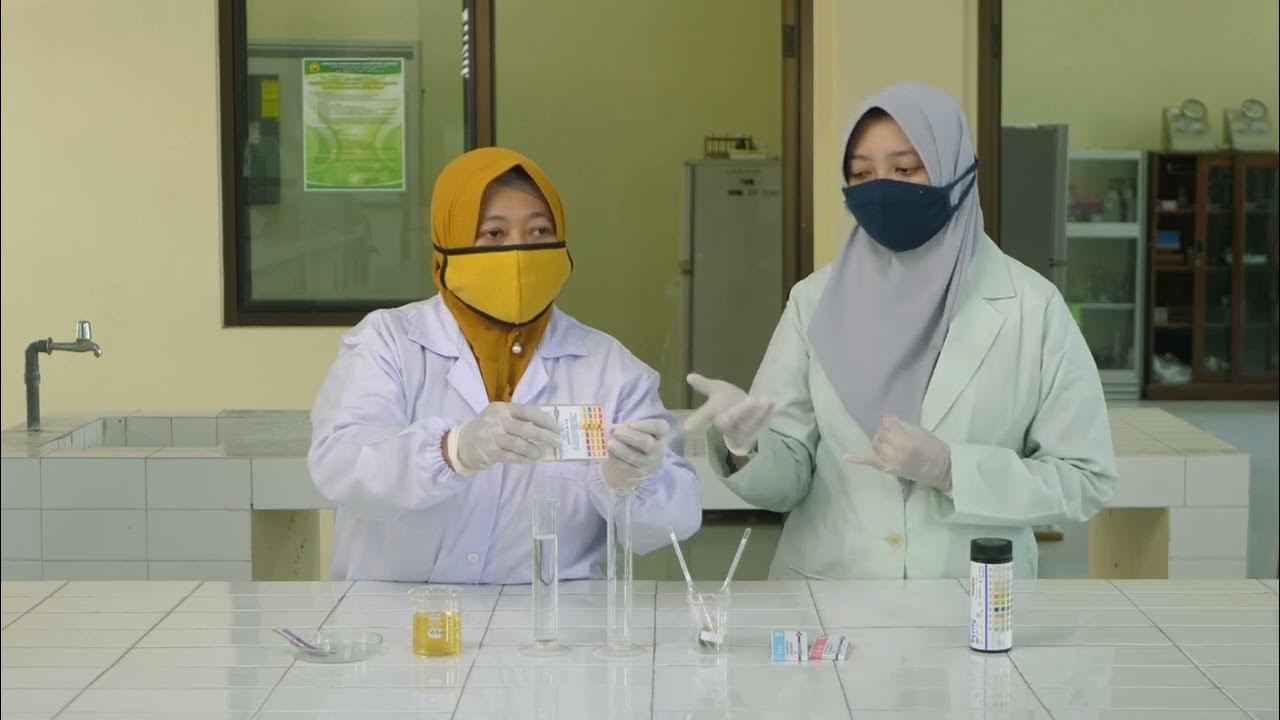Praktikum Sistem Ekskresi - Uji Kandungan Urin
Summary
TLDRThis educational video demonstrates an experiment on urine analysis to explore its physical properties and chemical contents. The process includes observing urine's color, clarity, pH level, aroma, and testing for glucose, starch, and protein using specific reagents. The findings from the experiment indicate that the urine sample was normal, with characteristics such as yellow color, a pH of 5.5, a typical ammonia-like aroma, and no glucose, starch, or protein. The experiment serves as a way to understand the excretory system and how urine reflects metabolic processes in the body.
Takeaways
- 😀 The purpose of the experiment is to understand the physical properties and content of urine.
- 😀 Urine is a waste product from the body's metabolism that is filtered by the kidneys and excreted during urination.
- 😀 The main tools for the experiment include test tubes, clamps, pipettes, and a spirit burner.
- 😀 The materials required for testing include urine samples (collected in the morning), Fehling's solution A and B, Lugol’s solution, Biuret solution, and universal indicator paper.
- 😀 The experiment starts by observing the color and clarity of the urine under light and recording the findings in a table.
- 😀 Universal indicator paper is used to measure the pH level of the urine, with a normal pH range between 4.5 and 8.
- 😀 The aroma of urine is tested by heating a small amount over a spirit burner for one minute and noting the scent.
- 😀 The Lugol’s solution test checks for the presence of starch (amilum) in urine by turning the urine blue-black if starch is present.
- 😀 Fehling’s solution test is used to detect glucose in urine. A red-brown color indicates the presence of glucose.
- 😀 The Biuret test is performed to detect proteins in the urine. A purple color indicates the presence of protein.
- 😀 The experiment results showed that the urine sample was normal, with characteristics like yellow color, clear appearance, pH of 5.5, and a distinct ammonia-like smell.
- 😀 The tests showed that the urine did not contain starch, glucose, or proteins, which suggests normal kidney function and no indication of conditions like diabetes or albuminuria.
Q & A
What is the main goal of the experiment in the script?
-The main goal of the experiment is to determine the physical properties and the content of substances found in urine, such as glucose, starch, protein, and pH levels.
What is the role of the kidneys in urine production?
-The kidneys are responsible for filtering waste and excess substances from the blood, which are then excreted as urine through the process of urination.
What equipment is needed for this urine analysis experiment?
-The equipment needed includes a test tube, a test tube rack, a test tube clamp, a dropper, and a spirit burner.
Which chemicals are used in the experiment to test for specific substances in urine?
-The chemicals used in the experiment include Fehling's solution A and B for glucose testing, Lugol's solution for starch testing, Biuret solution for protein testing, and Universal Indicator paper for pH testing.
How is the pH level of the urine measured in this experiment?
-To measure the pH, a strip of Universal Indicator paper is dipped into the urine sample, and the resulting color change is compared to a color scale to determine the pH value.
What indicates a positive test for glucose in the urine?
-A positive test for glucose is indicated by a color change to orange or reddish-brown after adding Fehling's solutions A and B and heating the sample.
What does a color change to blue-black during the starch test indicate?
-A color change to blue-black when adding Lugol's solution to the urine sample indicates the presence of starch.
What does a green color change in the Biuret test suggest about the urine sample?
-A green color change in the Biuret test suggests that the urine sample does not contain protein, as it is a negative result for protein.
What is the normal pH range for urine, and how does the urine sample in the experiment compare?
-The normal pH range for urine is between 4.5 and 8. In the experiment, the urine sample had a pH of 5.5, which is within the normal range.
What can be inferred if urine contains glucose or protein based on the experiment results?
-If urine contains glucose, it may indicate conditions such as diabetes mellitus. If protein is present, it could suggest a condition called albuminuria, which requires further medical investigation.
Outlines

Dieser Bereich ist nur für Premium-Benutzer verfügbar. Bitte führen Sie ein Upgrade durch, um auf diesen Abschnitt zuzugreifen.
Upgrade durchführenMindmap

Dieser Bereich ist nur für Premium-Benutzer verfügbar. Bitte führen Sie ein Upgrade durch, um auf diesen Abschnitt zuzugreifen.
Upgrade durchführenKeywords

Dieser Bereich ist nur für Premium-Benutzer verfügbar. Bitte führen Sie ein Upgrade durch, um auf diesen Abschnitt zuzugreifen.
Upgrade durchführenHighlights

Dieser Bereich ist nur für Premium-Benutzer verfügbar. Bitte führen Sie ein Upgrade durch, um auf diesen Abschnitt zuzugreifen.
Upgrade durchführenTranscripts

Dieser Bereich ist nur für Premium-Benutzer verfügbar. Bitte führen Sie ein Upgrade durch, um auf diesen Abschnitt zuzugreifen.
Upgrade durchführen5.0 / 5 (0 votes)






